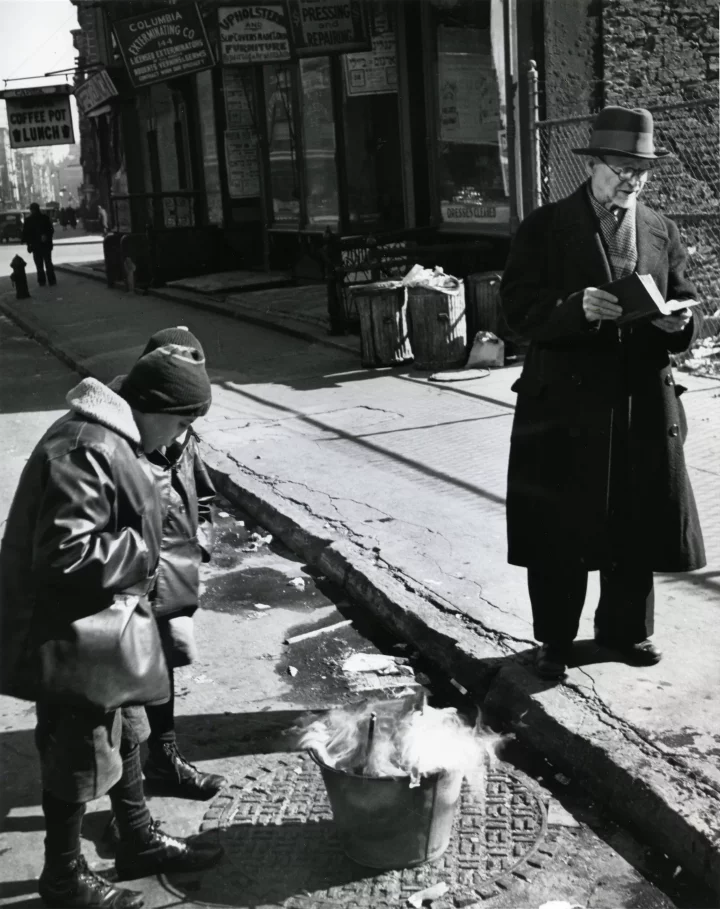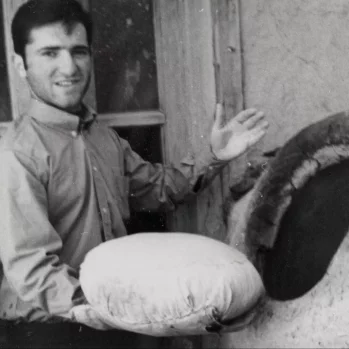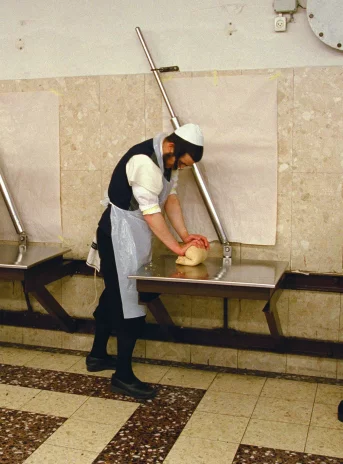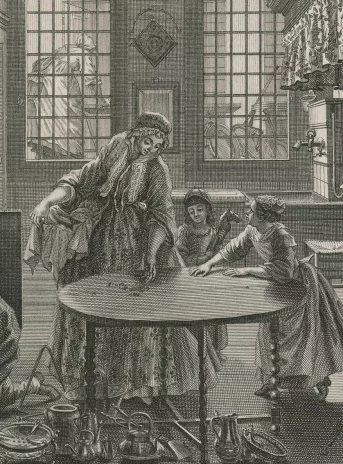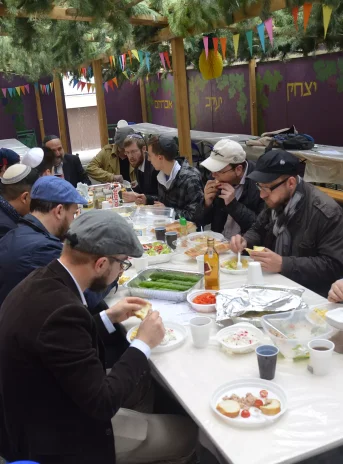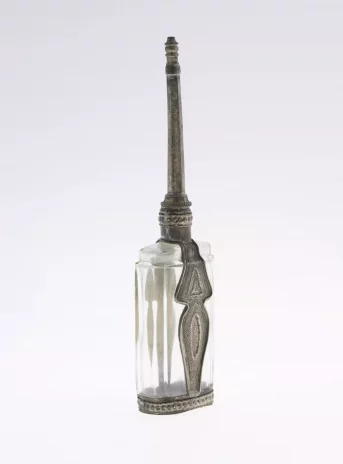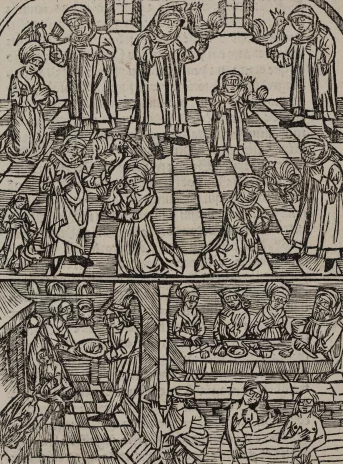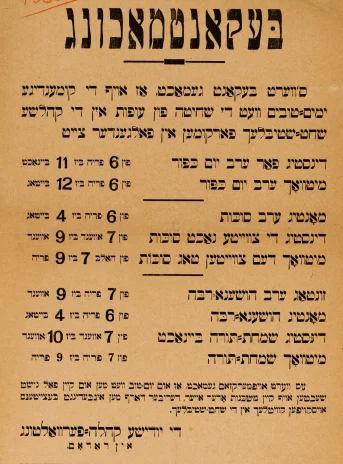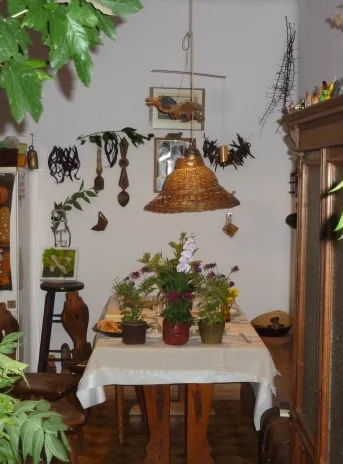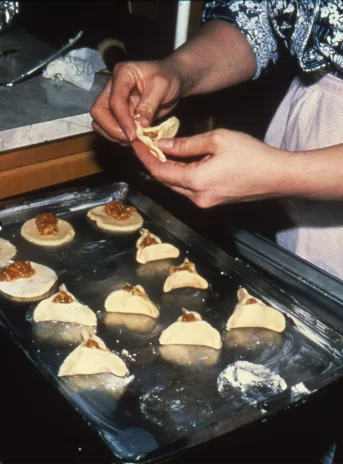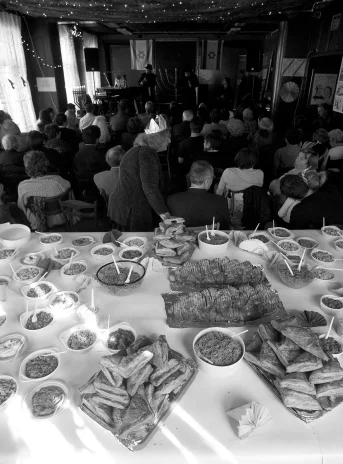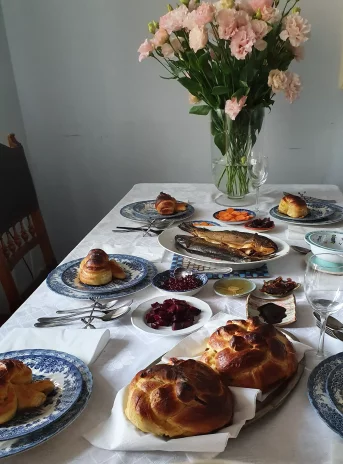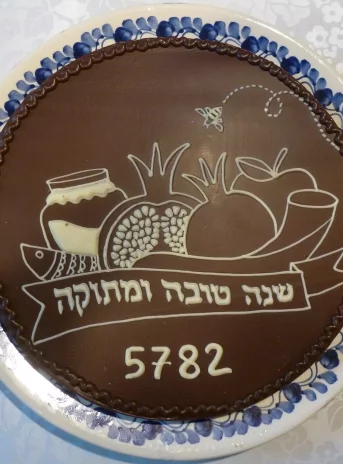HOLIDAYS: PAST AND PRESENT
Preparing for holidays, as well as celebrating them and keeping kosher constitute the foundations of Jewish identity across the world and help preserve the existence of the Jewish diaspora. They build social ties by emphasizing the unique role of home and family.
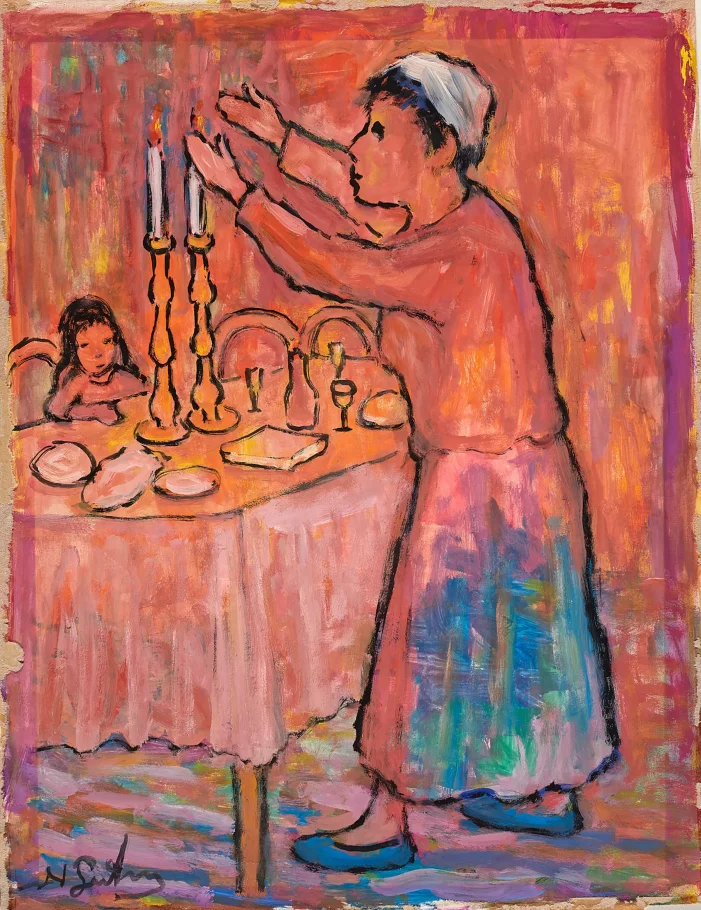
"Shabbat"
Nahum Gutman, watercolor on paper, 1950-1990.
POLIN Museum of the History of Polish Jews
View 3D
Shabbat preparations
During Shabbat, Jews must refrain from all work and must not light fires or cook. It is therefore imperative to prepare a substantial meal in advance and store it in a warm place. For this purpose, Jews from Central and Eastern Europe have been making cholent for centuries, while Jews from the southern part of the continent make adafina or hamin. In the distant past, pots of food were wrapped in straw in order to keep them warm. With time, it became common to take the pots to the local bakery to be stored in a heated oven overnight and collected on Saturday morning.
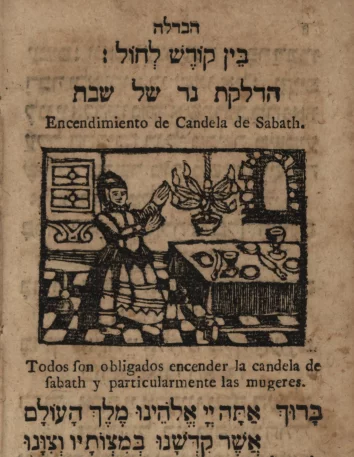
Lighting of the Shabbat candles
Illustration in "Minhagim", a collection of religious practices in the annual cycle, publ. Gerhard Johann Janson, Amsterdam, 1775
Gross Family Collection, Tel Aviv
See related objects
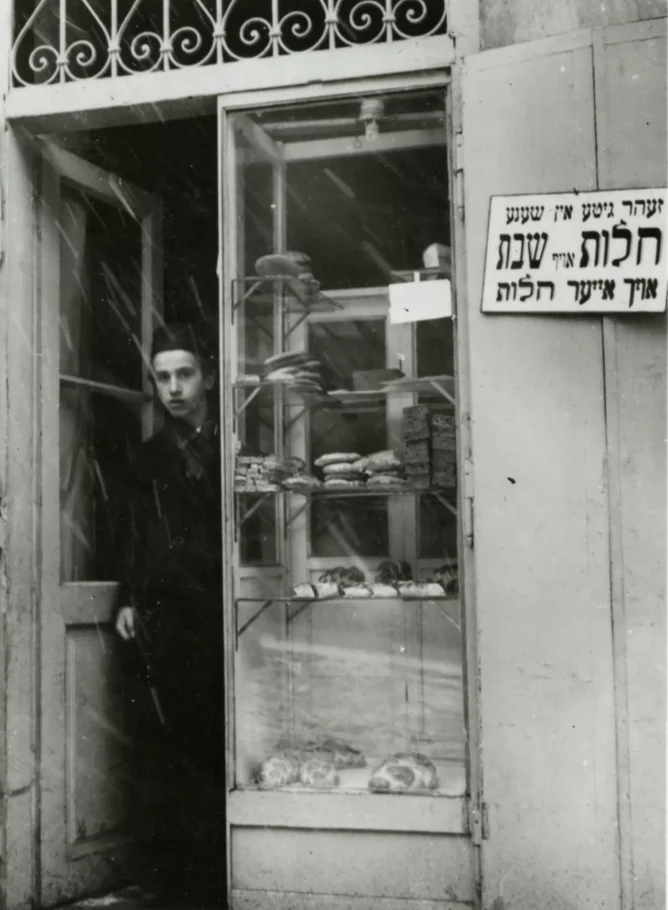
A boy in the doorway leading to a bakery
The sign in Yiddish reads: “Tasty and pretty challahs for Shabbat. We could bake your challah, too”. Kraków, 1938.
YIVO Institute for Jewish Research, New York
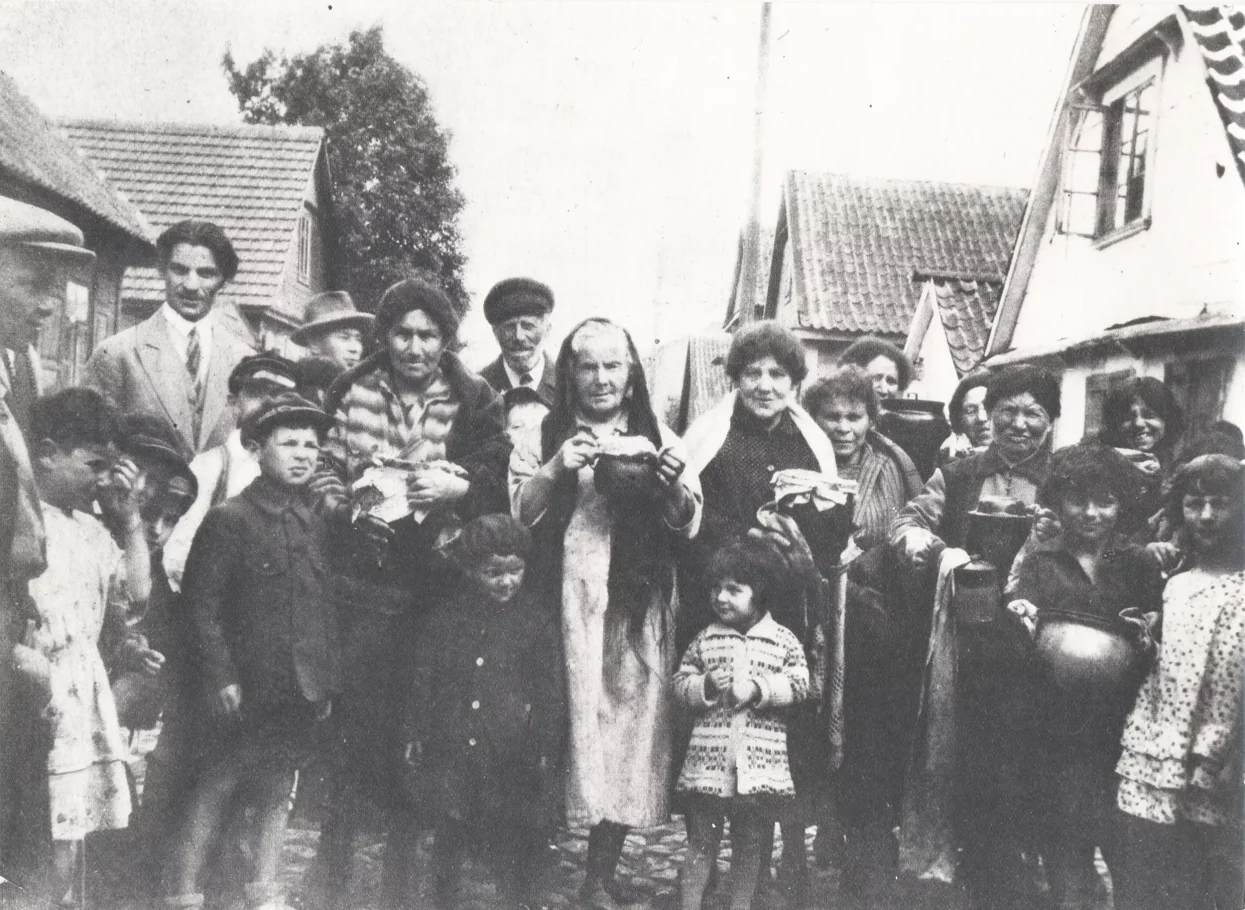
Women carrying pots of cholent to a bakery
Białystok, 1932.
YIVO Institute for Jewish Research, New York
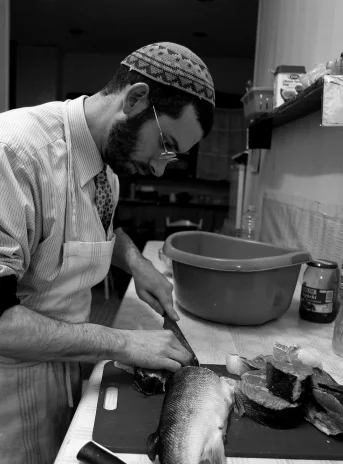
Preparing for Shabbat at the Jewish religious community in Katowice
In the photo, rabbi Yehoshua Ellis. 2011, photo: Arkadiusz Ławrywianiec
Private collection
See related objects
Pesach preparations
The Pesach holiday requires a special preparation. All products that contain leaven (heb. "chametz"), or that have come into contact with it, must be disposed of. This involves a thorough clean-up of the house and the removal of flour, bread crumbs, and all other articles (not only food) containing grain, even in trace amounts. These preparations culminate in a symbolic burning of leavened bread on the eve of the holiday. Before the war, there was a custom, which persists to this day in Orthodox communities in the United States and Israel, of burning chametz in public, in the courtyard. To avoid throwing away valuable products, property was often transferred to non-Jewish neighbours before Pesach by signing a sale contract.
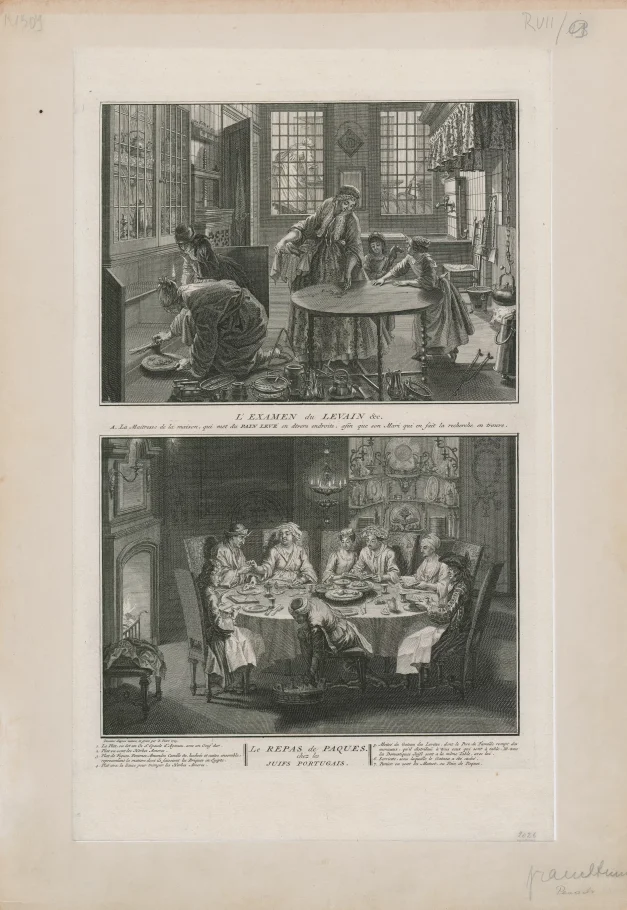
Cleansing the house of chametz and the Seder dinner
Scenes from the life of Portuguese Jews, copperplate engraving by Bernard Picart, Amsterdam-Paris, 1724.
Jewish Historical Institute, Warsaw
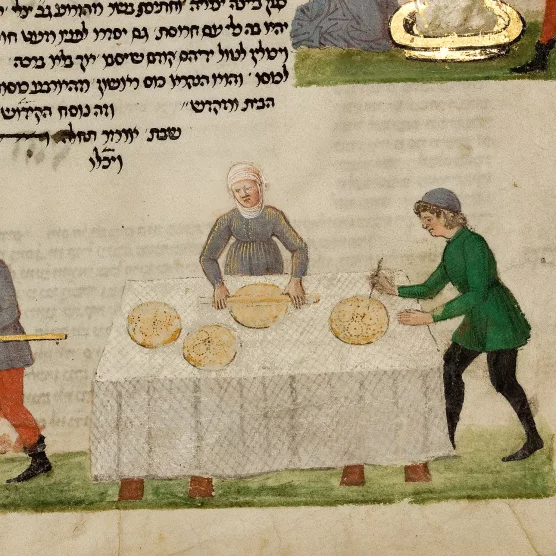
Preparations for Pesach
Illustrations in "Rotschild Miscellaneum" (a collection of varia), Venice, 1470.
The Israel Museum, Jerusalem
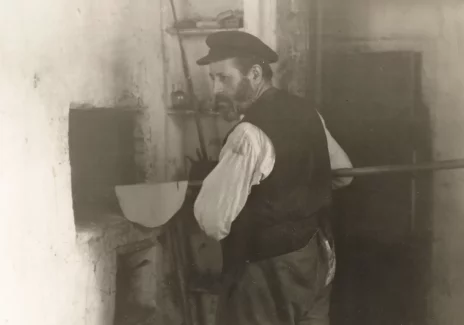
Baking matzo at a bakery
Lida, 1926, photo: Alter Kacyzne
YIVO Institute for Jewish Research, New York
See related objects
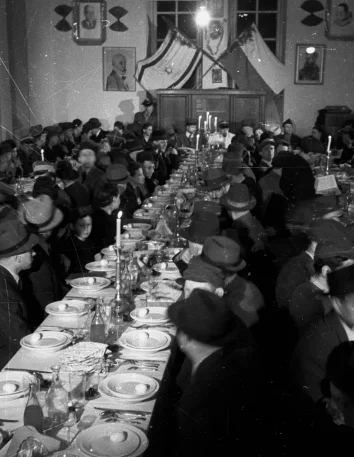
Seder evening attended by the Jewish survivors after the war
Poland, 1947.
Polish Press Agency, Warsaw
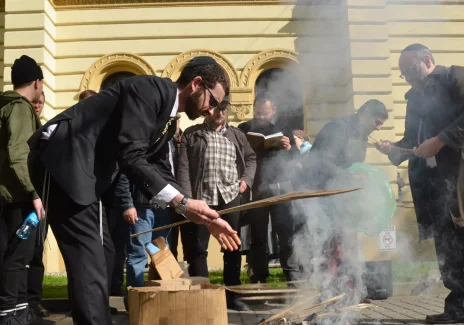
Burning chametz before Pesach in the Jewish community of Warsaw
In the foreground Rabbis Michael Schudrich and Yehoshua Ellis. 2019, photo: Krzysztof Bielawski.
POLIN Museum of the History of Polish Jews
See related objects
Pozostałe święta

SCROLL or CLICK&HOLD
to go on
